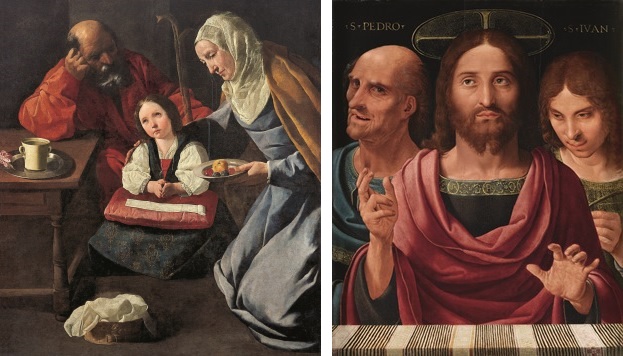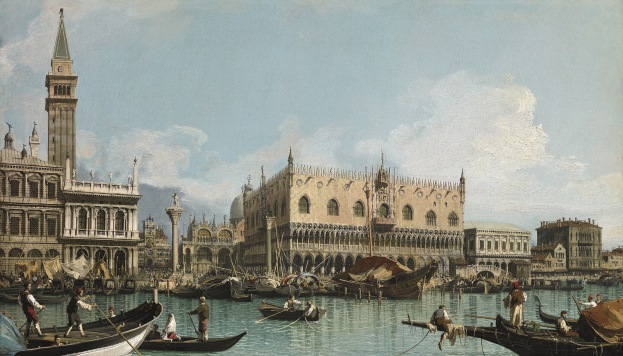
Francis Bacon. Two Studies for a Portrait of Peter Beard.
© The Estate of Francis Bacon/VEGAP, Madrid, 2014Bacon/VEGAP, Madrid, 2014
Juan Abelló and his wife Ana Gamazo paint an exceptionally revealing picture of themselves through the works that comprise this collection, which can be viewed at CentroCentro Cibeles until 1 March.
If I had to choose three words to sum up the spirit of this exhibition, they would be coherence, recovery and intimacy. “Coherence”, because even though many works of differing origins are brought together – particularly noteworthy are those belonging to the 17th century Spanish school and the 20th century avant-garde – the collection as a whole acquires a great degree of unity, seen in everything from the late medieval panel paintings to Bacon’s work. “Recovery”, because the collectors have chased down pieces that had been removed from the country, which now form part of Spain’s historic heritage, such as the panel painting Salvator Mundi entre San Pedro y San Juan (Salvator Mundi between Saint Peter and Saint John) by Yáñez de la Almedina and El joven gallero (The Young Fighting Cock Trainer) by Murillo. And “intimacy”, because drawing is a discipline best enjoyed at short distances, which is given a starring role in the exhibition thanks to the Álbum Alcubierre, which gathers together works by Alonso Cano and Valdés Leal.

Francisco de Zurbarán: La familia de la Virgen (The Family of the Virgin)
/ Fernando Yáñez de la Almedina: Salvator Mundi entre San Pedro y San Juan (Salvator Mundi between Saint Peter and Saint John).
At the beginning of the exhibition there is a room devoted to Madrid which will be of particular interest to those who have visited the city on more than one occasion. Although some of the buildings portrayed in these paintings and drawings have unfortunately disappeared or been profoundly altered, other scenes are still perfectly recognisable. In these works the vividness and realism depicted in small details such as a picnic or a bullfight catch the viewer’s eye.
We are then presented with a more or less linear narrative of the history of painting distributed across two rooms, one at the beginning of the exhibition and another right before the entrance to the last section. These two rooms are like a hinge that draws together very disparate works, such as a portrait by Joris van der Straeten and another by Juan Gris as well as a still life by Benjamín Palencia and another by Tomás Yepes (the latter of which is one of my favourites due to its extraordinarily detailed depiction of some birds). Even so, in regard to the finds unearthed by the exhibition’s curators, Felipe Garín and Almudena Ros de Barbero, I would mainly highlight the subtle recognition of Spanish artists in the international context. For example, the works of Ramón Casas and Rusiñol are displayed alongside pieces by the grand masters of Impressionism and Post-Impressionism like Degas and Van Gogh, which are rather scarce in our public collections. And Tàpies and Miró act as an anteroom to the spectacular triptych by Bacon housed in the last of the exhibition’s rooms, which loops back via the hall to the first work displayed in the exhibition, San Francisco (Saint Francis) by El Greco.

Giovanni Antonio Canal, Canaletto. The Molo of Venice close to St. Mark’s Square
In addition to providing a clear picture of the evolution of Spanish and European painting with special attention paid to drawing, the exhibition brings together an important collection of outstanding pieces. Many visitors will stop to take note of La educación de la Virgen (The Education of the Virgin), which was initially attributed to Velázquez but is now considered to be the work of Zurbarán and whose harmonious composition results from the placid balance between the dimensions of the figures portrayed, or of El olfato (Allegory of Smell) by Ribera, an evocative exercise in synaesthesia that lies somewhere between a still life, an allegory and a portrait, and just about sums up all of the major questions that painting has sought to answer over the centuries.